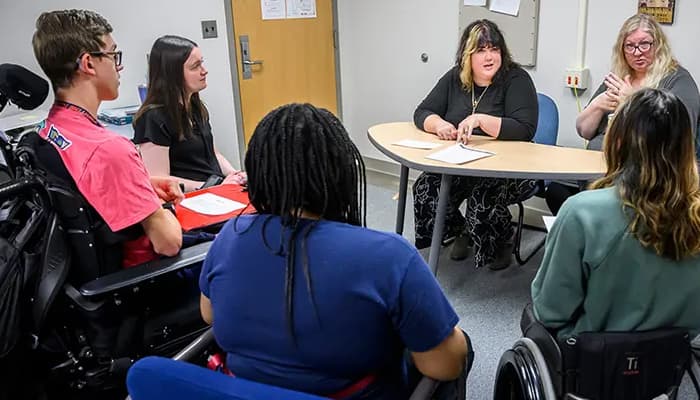
If you’re navigating education as a student or supporting someone who is, you might feel overwhelmed by all the programs, grants, and resources out there. The truth is, the U.S. has a wide range of education welfare policies specifically designed to support students who face extra challenges—whether it’s financial barriers, being the first in your family to go to college, or managing a disability. Here’s a practical guide to the key benefits and programs that could make a real difference for you or your loved ones.
1. Low-Income Students: Making College Affordable

Money is often the biggest barrier to pursuing higher education. Thankfully, there are programs designed to ease that burden:
Pell Grants: These are need-based grants that don’t need to be repaid. For many students from low-income families, Pell Grants can cover a large portion of tuition, freeing up money for books and living expenses.
TRIO Programs: Think of TRIO as a safety net. Programs like Student Support Services and Upward Bound provide tutoring, mentoring, and counseling, helping students stay on track and graduate. If you’re worried about balancing school with work or family, TRIO programs can provide the extra guidance you need.
State Scholarships: Many states offer additional financial aid. For example, California’s Cal Grant, New York’s TAP, and Georgia’s HOPE Scholarship provide tuition support that can make the difference between attending college or postponing it.
Tip: Always check your state’s higher education website—you might be surprised by grants and scholarships you didn’t know existed.
2. First-Generation College Students: Guidance Matters
Being the first in your family to attend college is exciting—but it comes with unique challenges. You might feel lost navigating applications, financial aid, or even simple college logistics.
TRIO First-Generation Programs: These programs connect you with mentors, tutoring, and workshops to help you succeed. Think of it as having a guide who’s been through the process and can answer all your “what do I do now?” questions.
Campus Resources: Many colleges now have First-Generation Student Offices offering social events, academic coaching, and even peer networks. You’re not alone—these programs are there to help you navigate the entire college experience.
3. Students with Disabilities: Equal Access, Real Support

College can be challenging enough without physical or learning barriers. Education welfare ensures that students with disabilities have the tools and accommodations to thrive.
Federal Protections: Under Section 504 and the Americans with Disabilities Act (ADA), colleges must provide accommodations like extended test time, note-taking support, or accessible classrooms.
Campus Disability Offices: These offices help students access adaptive technology, tutoring, and guidance to create a personalized learning plan.
Vocational Rehabilitation Programs: Many states offer programs that help students with disabilities transition from school to college or career paths.
Tip: Don’t hesitate to reach out early—most accommodations require some planning, but they make a huge difference once in place.
4. Minority and Underrepresented Students: Resources to Succeed

Minority students sometimes face systemic challenges that affect access to education. Welfare programs aim to level the playing field.
Scholarships and Grants: Programs like the Minority Science and Engineering Improvement Program (MSEIP) provide funding for minority students pursuing STEM fields. Other universities offer merit-based and need-based scholarships specifically for underrepresented students.
Mentorship and Peer Networks: Many schools have mentorship programs and student organizations that provide guidance, networking, and a sense of community.
Tip: Look for cultural centers or affinity groups on campus—they’re more than social clubs—they can connect you with mentorship and academic resources.
5. Immigrant and Refugee Students: Bridging the Gap
Moving to a new country comes with a lot of adjustments, and education can feel especially challenging. Welfare programs support immigrant and refugee students in catching up academically and integrating into U.S. schools.
English as a Second Language (ESL) Programs: These classes help students improve language skills while keeping up with academic content.
State Grants: Some states offer additional funding for immigrant and refugee students, helping cover school supplies, transportation, and tutoring.
Mentorship and Community Programs: Local community centers often provide guidance, tutoring, and social support.
6. Homeless and Foster Youth: Staying in School Against the Odds

Students without a stable home face unique challenges, but education welfare policies are designed to keep them in school.
McKinney-Vento Act: Guarantees immediate school enrollment, transportation to school, and other supports for homeless students.
Foster Youth Programs: Many states offer tuition waivers, scholarships, and mentoring specifically for foster youth, helping them access higher education opportunities.
Tip: If you fall into one of these groups, speak with your school counselor—they can help you access these programs and resources.
Key Takeaways
Education welfare in the U.S. is more than just grants and scholarships. It’s a network of programs designed to support students academically, financially, and socially. Whether you’re low-income, first-generation, a student with a disability, or navigating life as a foster youth or immigrant, there’s support available—if you know where to look.
Pro tip: Start by visiting your college’s financial aid office, disability services, or student support center. They are experts in connecting students to federal, state, and local programs that fit your situation.
Education welfare is here to level the playing field. By taking advantage of these programs, you’re not just surviving—you’re setting yourself up to thrive.
